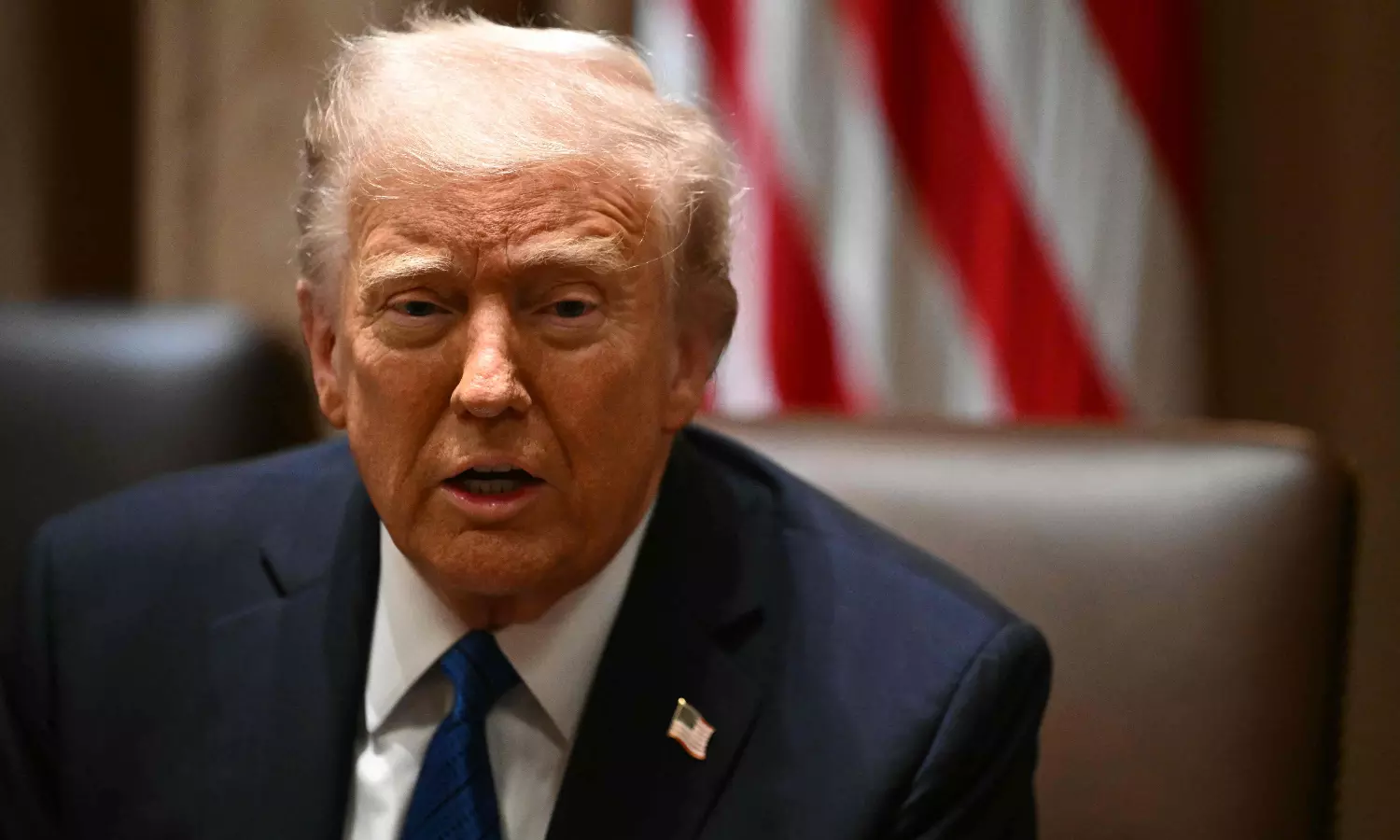Saeed Naqvi | Will Yemen Turn Out to Be Trump’s Afghanistan or Vietnam Nemesis?
Trump’s bombing of Yemen risks repeating past mistakes in conflicts like Vietnam and Afghanistan amidst the ongoing Saudi-Yemeni strife.;

US President Donald Trump, who promised to end all wars and never start one, has travelled 8,000 miles to bomb Yemen. If he continues, Yemen might become his Vietnam and Afghanistan. In many ways, they are similar, populated by dogged fighters. As the President and his men know not a jot about its history, sociology or topography, here are some notes from my travels.
At 8,500 ft, Sana’a, Yemen’s capital, has a magical air of leisure. its maze of lanes, lined with multi-storied mud and brick mansions, decorated with exquisite mosaic.
But the peace of Sana’a disguises storm clouds of conflict, every bit as complex and dramatic as Afghanistan. The reason Yemen conflicts don’t dominate our TV screens is easily explained. The theatres of conflict in Sana’a, bordering Saudi Arabia, are bare, steep and craggy mountains, suited more for rock climbers.
That Wahabi rulers from adjoining Saudi Arabia in the 19th century destroyed Najaf, the shrine of Ali, and Karbala, offers clues to the theological Saudi-Yemeni conflict which still remains unresolved.
How did a system of imams find root in Yemen? Prophet Muhammad’s son-in-law, Hazrat Ali, is the Shias’ first imam. Sunnis revere him as the fourth caliph. Somewhere there lies the roots of the Shia-Sunni tussle. Ali was sent to Sana’a by the Prophet as a qazi, or judge.
Ali’s oldest son, Hasan, is the second imam. The younger son, Hussain, the martyr of Karbala, is the third. Hussain’s son, Zain-ul-Abedin, was the only surviving male relative of Hussain at Karbala as he was ailing and could not go into battle.
He recovered and became the fourth imam. His two sons Baqar Ibne Ali and Zaid Ibne Ali differed over the Battle of Kabala. Baqar’s was the more Gandhian approach. He believed that the martyrdom of Imam Hussain and his family at Karbala had already spurred a massive revival of Islam.
After the Ottomans, Yemen remained two countries: North Yemen, with a population of 20 million, with its capital at Sana’a, and South Yemen, with a population of four million, had its capital at Aden, strategically at the mouth of the Gulf of Aden.
The British, therefore, held onto it tenaciously until Arab socialism swept the Arab world under Nasser. The socialist fervour ousted the British in 1967. Amidst the Cold War, South Yemen came under Soviet influence.
Look at one more detail, even if it complicates the narrative. As the last imam, Yahya, was under pressure from the Ottomans, he bargained with the Saudis, his northern neighbour, for peace.
Under this bargain, two districts, Nigran and Jizan, were given to the Saudis on a sort of renewable lease.
According to Dr Nasr al-Naqeeb, a well-known Sana’a intellectual, the two districts are “oil rich”.
Otherwise, why would the Saudis accept two Shia-dominated Yemeni towns next door to the militant Shias called the Houthis. Houthis derives from name of their leader Malik as Houthi.
Now, let’s pick up the narrative chronologically from the 1980s, after the Soviet occupation of Afghanistan. The US, the Saudis and Pakistan’s dictator, Gen. Zia-ul Haq started manufacturing extreme Islamists in countless madrasas in Pakistan, for which that country is paying the price to this day.
For Prince Naif bin Abdel Aziz, Saudi interior minister, the Pakistani madrasas were not enough.
Thoroughbred Arabs had to be trained in militant Islamism too. Just as the Afghan mujahideen would expel the Soviets from Afghanistan, their counterparts would strive to unsettle pro-Soviet Nasserism in Aden.
What better place to open training camps than in neighbouring Yemen, particularly as South Yemen was close to the Soviets the militants were being trained to oust from Afghanistan. Yemen President Saleh’s half-brother, Ali Mohsin al Ahmar, took local charge of all the training camps. Look at the concept -- bases for Islamic extremism would check wherever the Soviets reared their heads. With
the collapse of the Soviet Union, the picture has changed radically. It is this Arab component which is at the heart of what is called Al-Qaeda as different from the Pashtoon-dominated Taliban.
In 1990, therefore, South Yemen lost its main Soviet support with the fall of the Soviet Union. The South could no longer resist unification. Iraq’s Saddam Hussein played a leading role in the unification of Yemen in 1990.
Since Saleh, the Yemeni strongman in Sana’a at the time, was beholden to Saddam Hussein, he opposed the wars on Iraq bringing him on a side opposed to the Saudis.
Taking advantage of a chill in Riyadh-Sana’a relations, the Shias (Houthis) bordering Saudi Arabia stepped up their “Shia-ism” on both sides of the border. This offended the Saudis. The decade-old Saudi-Yemen war destroyed Yemen but never managed to defeat the Houthis. This despite air and intelligence support from the US and Britain. This is what President Trump needs to take note.
There were once reports, put out by US intelligence, that 400 Hezbollah fighters were, at one stage, present to fight alongside the Shias. These fighters have since been withdrawn. In any case, there have been at least five full-fledged wars against Sana’a since 2002.
International pressure caused the two sides to sign a six-point peace agreement. One of the points was that the Shias “will refrain from attacking Saudi territories”. This led to a kind of peace which I witnessed.
In the Sana’a old town, people sat around in circles chewing “qat”, a bunch of leaves, a sort poor-man’s non-addictive cocaine (imagine paan with an intoxicating edge), spending their days in this legally sanctioned national habit, very easily oblivious of the storms which in their collective memories have hovered over them for as long as they can remember. The threat of raining “hellfire” is one such President Trump.
The writer is a senior journalist and commentator based in New Delhi

